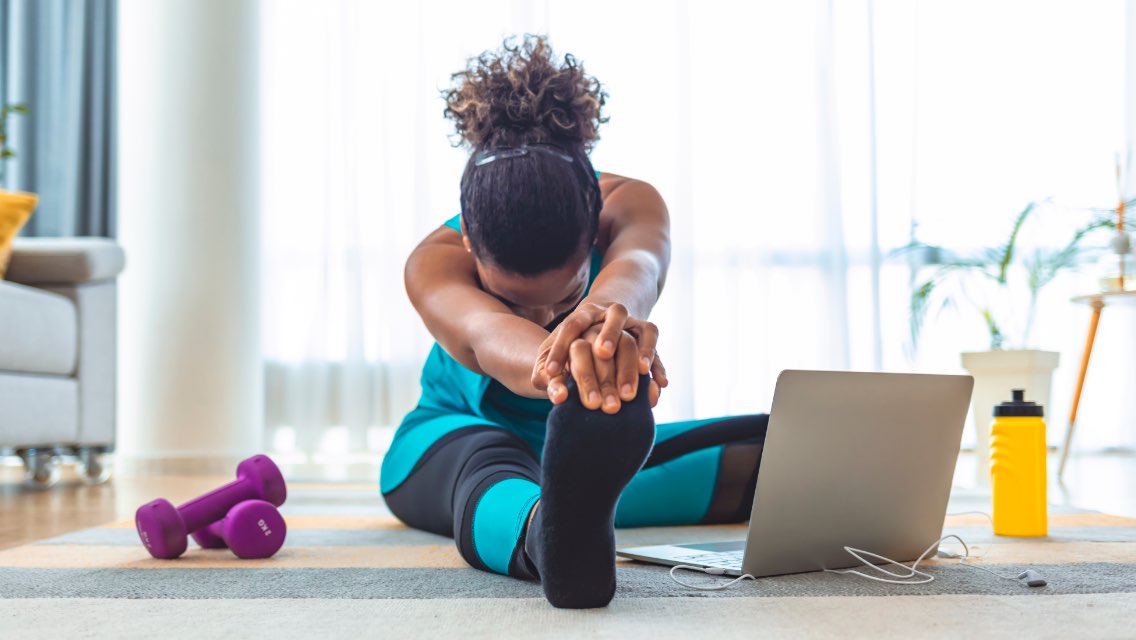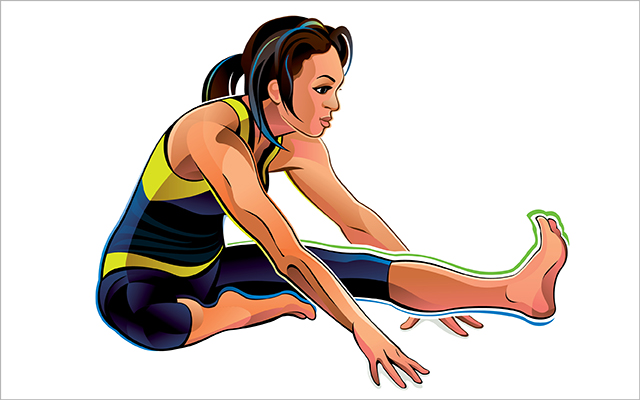Most of us understand the benefits of cardiovascular conditioning and weight training, but how exactly does flexibility fit into the greater fitness picture?
Whether you’re becoming active again after a long period of sedentary living or are working toward performance-related goals, there’s a place for enhanced flexibility to support your fitness vision. And if what comes to mind initially are memories of gym class stretching, rest assured, exercise science has come a long way since then.
Read on to learn about what makes us stiff, the benefits of flexibility, and the variety of safe stretching techniques you can use in your workout routine.
Causes of Stiffness
Lack of Stability
It’s important to first understand some basics around joint range of motion (ROM). There are many factors at any given time that can reduce ROM, whether chronic or acute. An important and less understood point is that whenever you increase ROM at a particular joint, you want to ensure that ROM is stable. With improved stability of a joint comes increased mobility of a joint. If a joint is unstable, the body will protect the joint by tightening up muscles that surround the joint.
Lack of Movement
Whether you’re sedentary at work or you’re just waking up from a quality eight hours of rest, your joints have become comfortable in their lack of movement — so much so that they become stiff.
This is normal. But that’s why the best thing you can do upon waking is to get in some movement. As a real-life example, watch your pets as they get up from a nap: As soon as they wake up, they stretch out their joints before they’re off and ready to play.
Your body is no different, and the same principle holds for your wakeful day. If you’re sedentary each hour of the day, your body becomes comfortable in that position. The longer you sit, the harder it is for your muscles to loosen up and respond to movement.
Incorporating at least 10 minutes of movement each hour is essential to increase and maintain flexibility.
Benefits of Improving Flexibility
Decreased Risk of Injury
Joint injuries typically occur when a joint is unstable and taken into a ROM that is unfamiliar. With more stable ROM, your body will be much more prepared for varied activities — whether it’s a pick-up game of basketball, a new workout routine, or even a seasonal household project.
Increased Muscular Performance
No matter if your goal is to improve strength or increase endurance, flexibility can be a limiting factor if it’s not included in your training plan.
As it pertains to strength training, the more ROM you can accomplish with stability, the more the muscles are able to develop and grow. Additionally, without effective ROM in endurance activities such as running or swimming, your actual effort will be doubled, maybe even tripled. By increasing your stability and flexibility, your body will perform much more efficiently in your endurance event.
Improved Posture
With lack of activity over time, we begin to lose the battle with gravity. Our bodies become more and more familiar with poor posture, with pain many times also accompanying it. Incorporating flexibility work into your movement routine can pay significant dividends for improving your posture and reducing or eliminating joint pain.
Techniques to Improve Flexibility
It’s important to acknowledge that everybody responds uniquely to different flexibility techniques. Remember, the best type of ROM is one that is stable.
Here are some examples of various techniques that may be used to increase stable range of motion and, thereby, improve safe flexibility.
Static Stretching
There are two types of static stretching: active and passive.
- Active stretching means that you are adding force to the stretch to its maximal position and holding it for 30 seconds or more.
- Passive stretching is a similar concept, but uses a partner or machine to increase intensity.
Note that many experts question this technique and its perceived benefits. Some suggest that static stretching may cause irritation or injury, while others stay true to the recommendation to include it in a fitness regime. In keeping with these concerns, proceed with caution and seek help from a fitness professional to determine the best approach for you.
It’s important to note that if you chose to stretch statically, it should primarily be implemented at the end of your movement or exercise routine.
Dynamic Stretching
This type of stretching is often targeted toward a specific sport or movement within a sport. Sometimes it requires movement continuously through ROM that mimics the specific movement that would occur during playtime in that given activity.
An example may be a golfer continuously swinging a golf club with repetition, gradually increasing the ROM until working up to a full golf swing.
SMR: Self Myofascial Release (AKA Foam Rolling)
For this technique, you can use your own body weight to determine the amount of pressure applied to “massage away” any restrictions in your soft tissues (e.g., muscle, tendon, ligaments, or fascia). If you’re going to use a foam roller, we would recommend starting with a softer roller to avoid causing trauma to the tissue.
Manual Joint Therapy
There are many other manual joint therapy modalities that may require a professional to manipulate the body to allow for greater ROM. Some of these include Muscle Activation Techniques, PNF (Proprioceptive Neuromuscular Facilitation), or even massage.
Improving your flexibility can offer significant benefits to your health and fitness, as well as your overall quality of life. If you’re still unsure about how to start, seek out advice from a health and fitness professional who can offer educated guidance on which technique is best for you.




